Abstract
Pigeons were required to produce exactly four pecks on each of two keys in any order for reinforcement. Correct response sequences were reinforced on either fixed-interval two-minute or fixed-ratio four schedules, with each correct sequence treated as a single response. Each pigeon developed a particular dominant sequence that accounted for more than 80% of all sequences. Sequence stereotypy was relatively unaffected by the temporal properties of the fixed-interval and fixed-ratio schedules. Response time (time from the first response in each sequence to the last) was also relatively unaffected by the temporal properties of the schedules. In contrast, response latency (time from end of one sequence to the beginning of the next) was markedly affected by the schedules. Latencies were long early in the interreinforcement interval and got shorter as the interreinforcement interval progressed. These data suggest that stereotyped response sequences become functional behavioral units, resistant to disruption or alteration by reinforcement variables that ordinarily influence the temporal spacing of individual responses.
Keywords: fixed-interval schedules, fixed-ratio schedules, stereotyped behavior, pigeons
Full text
PDF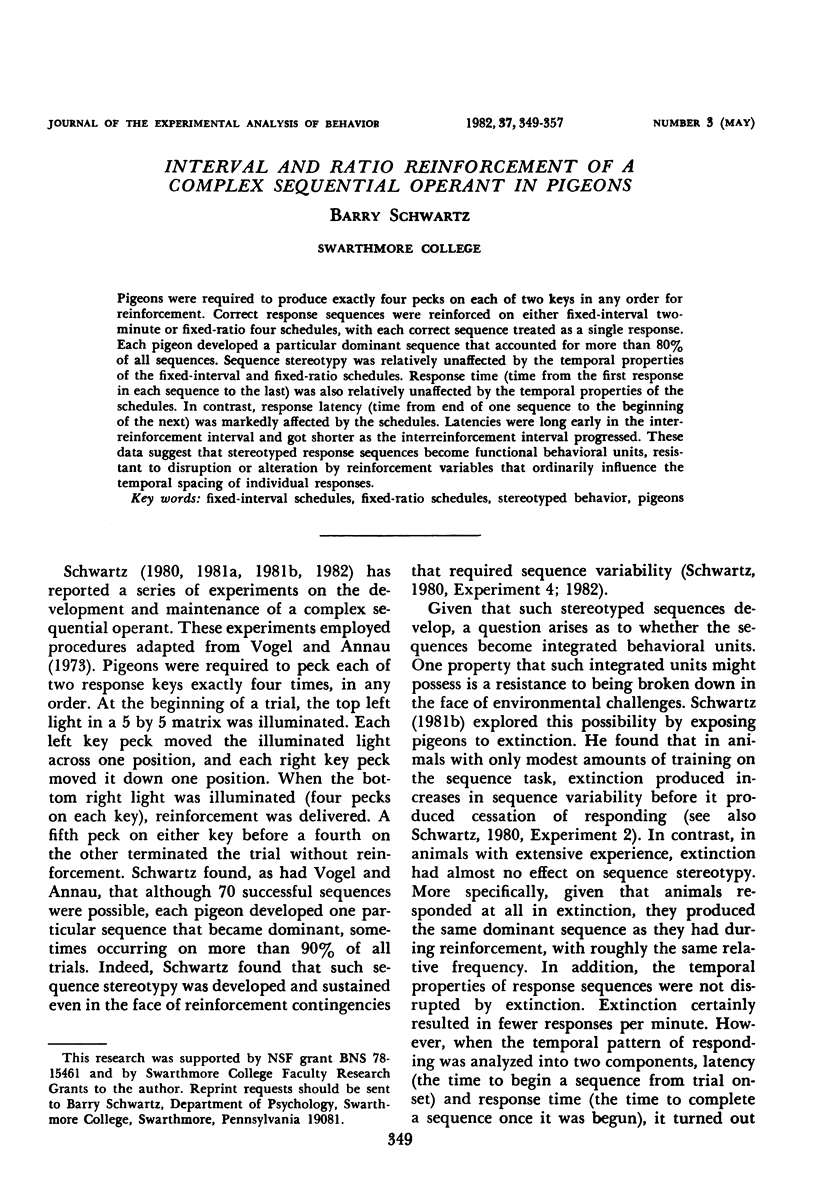
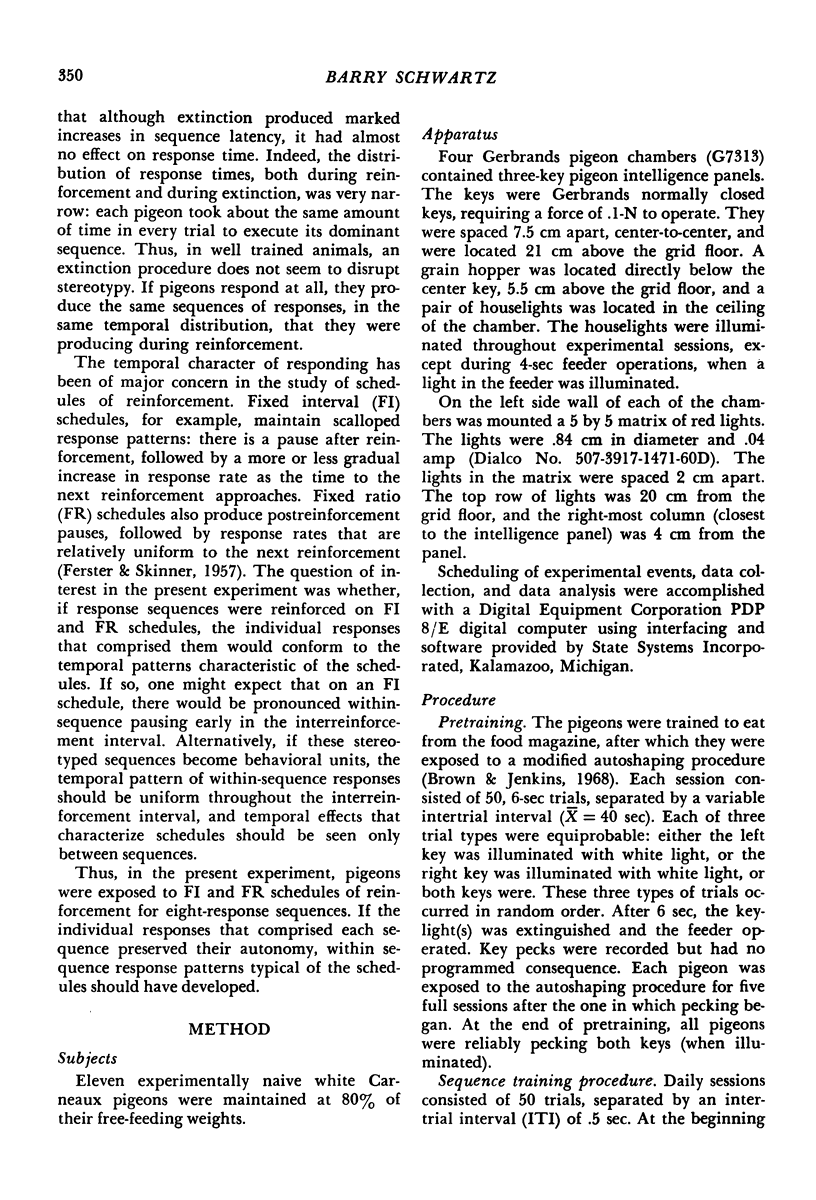
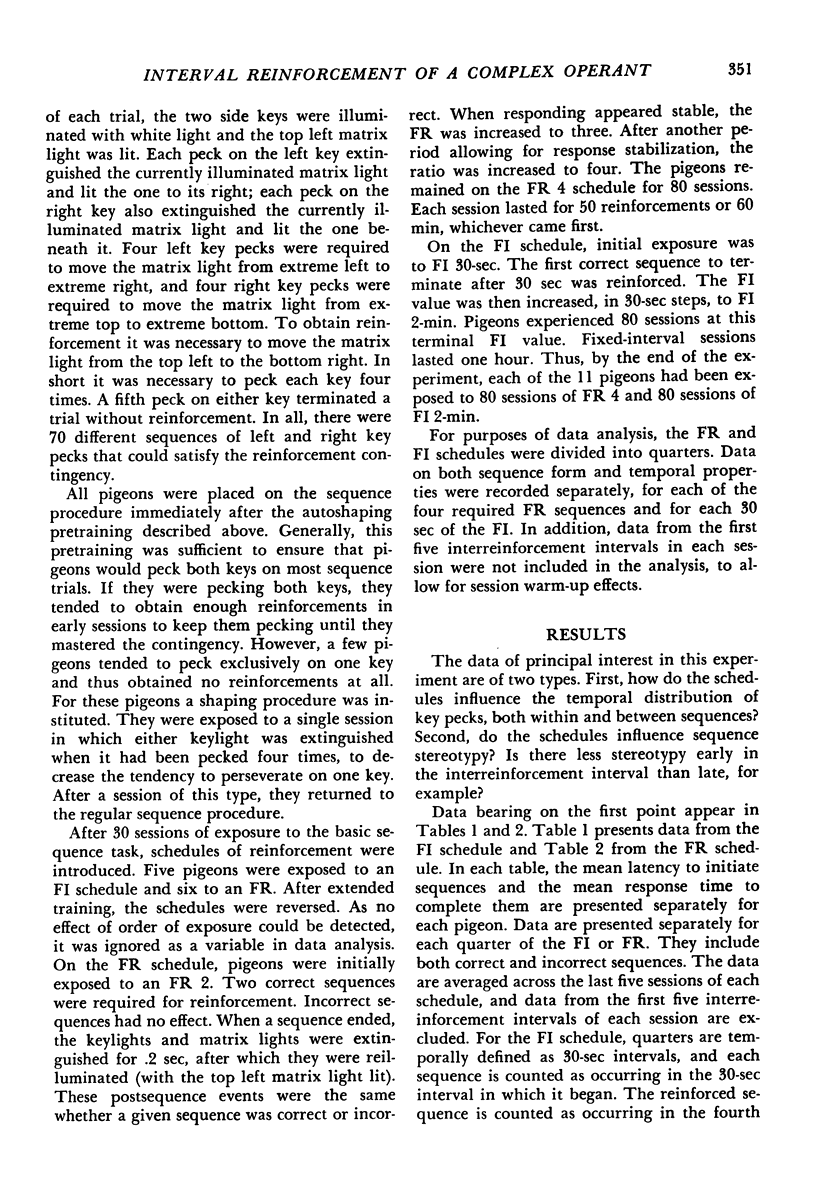
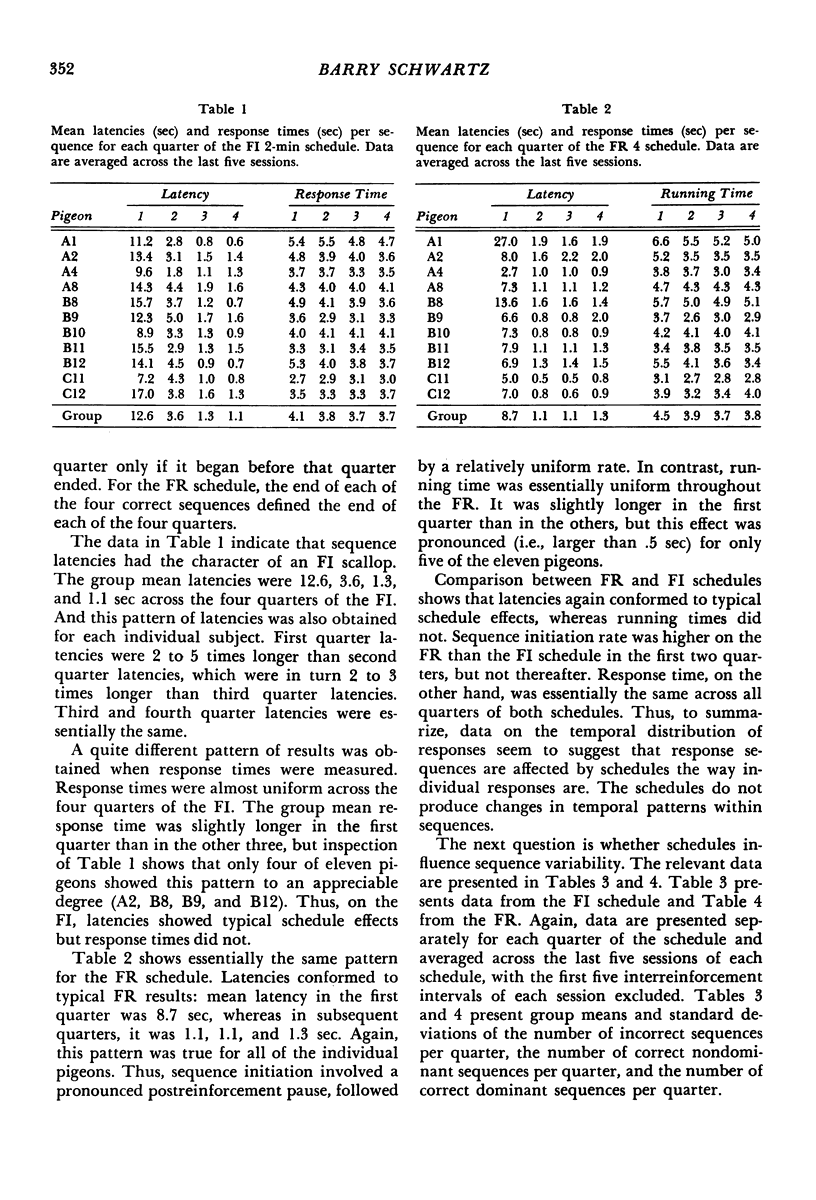
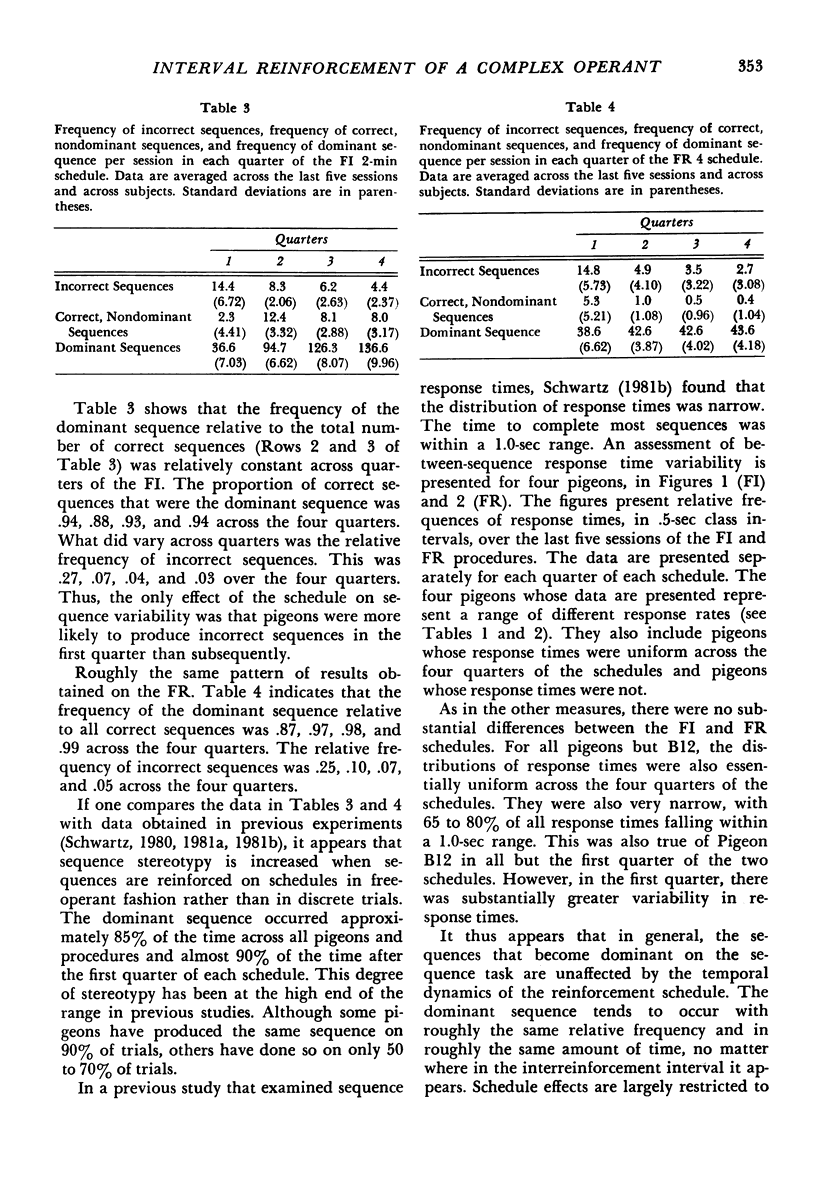
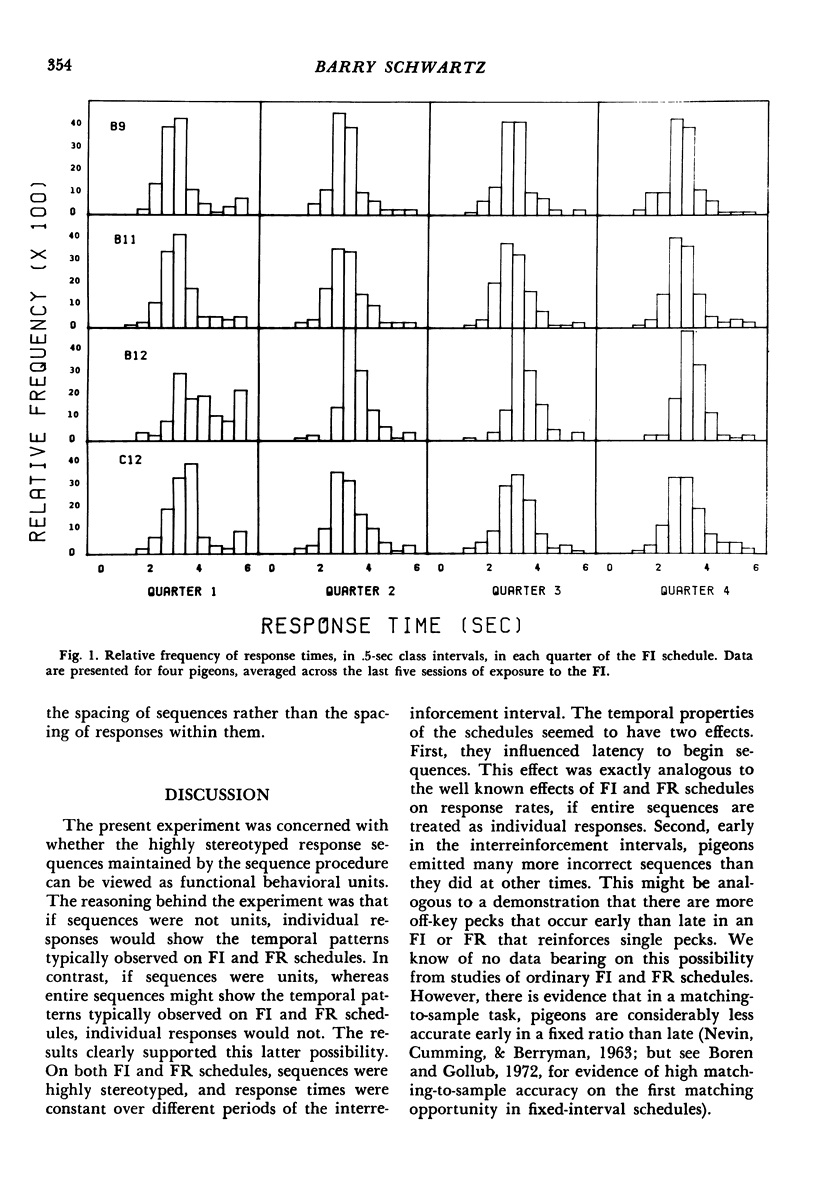
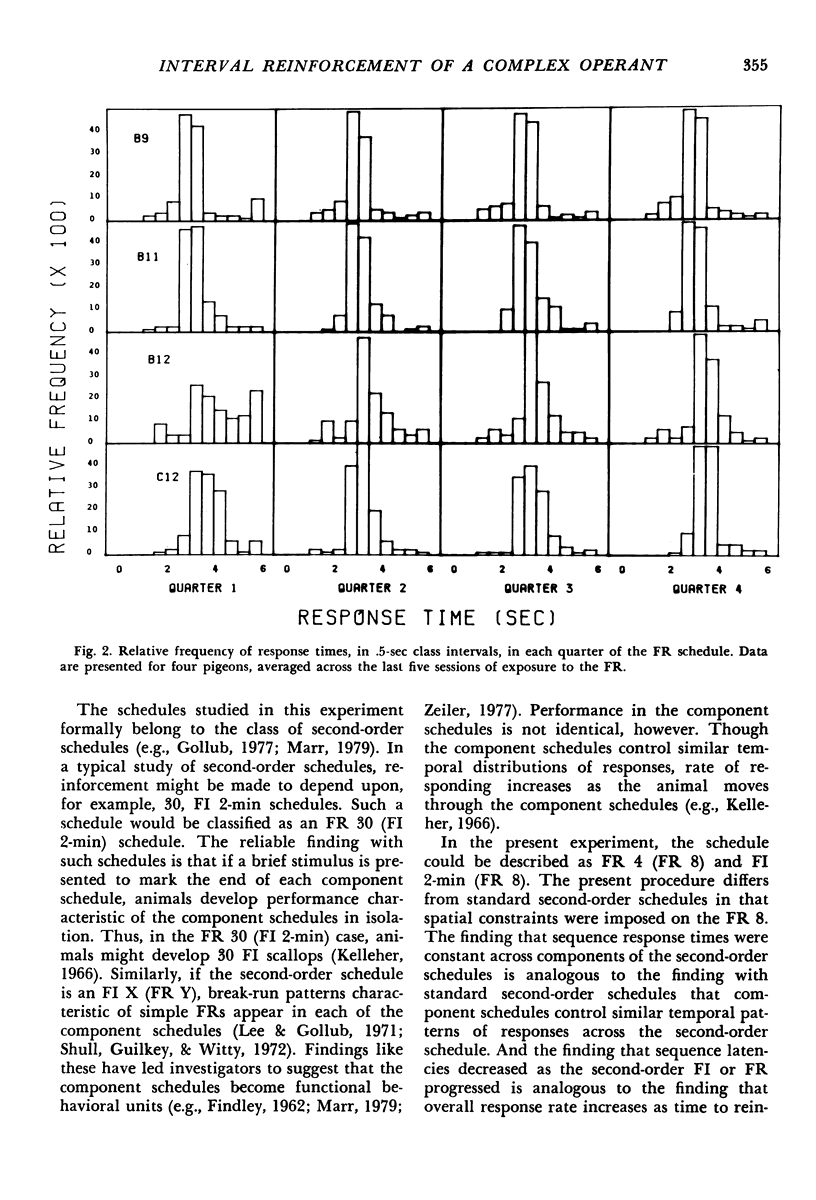
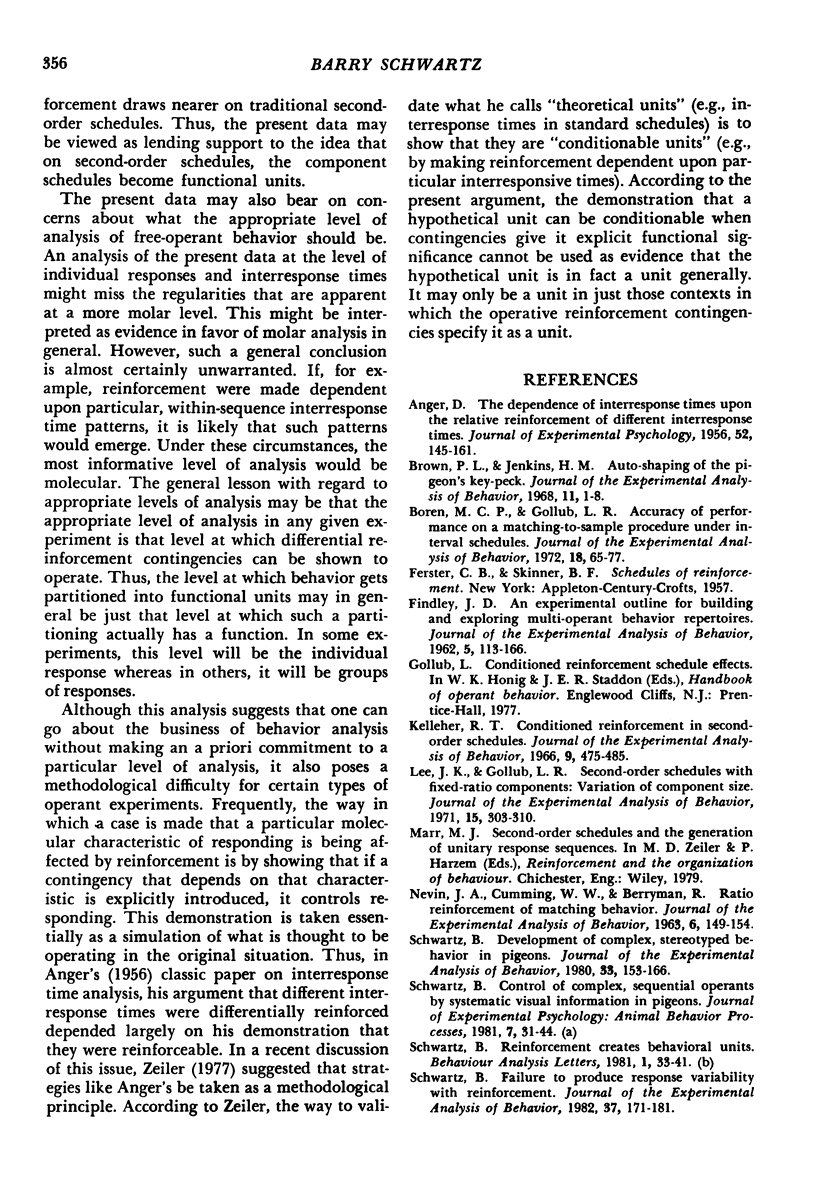
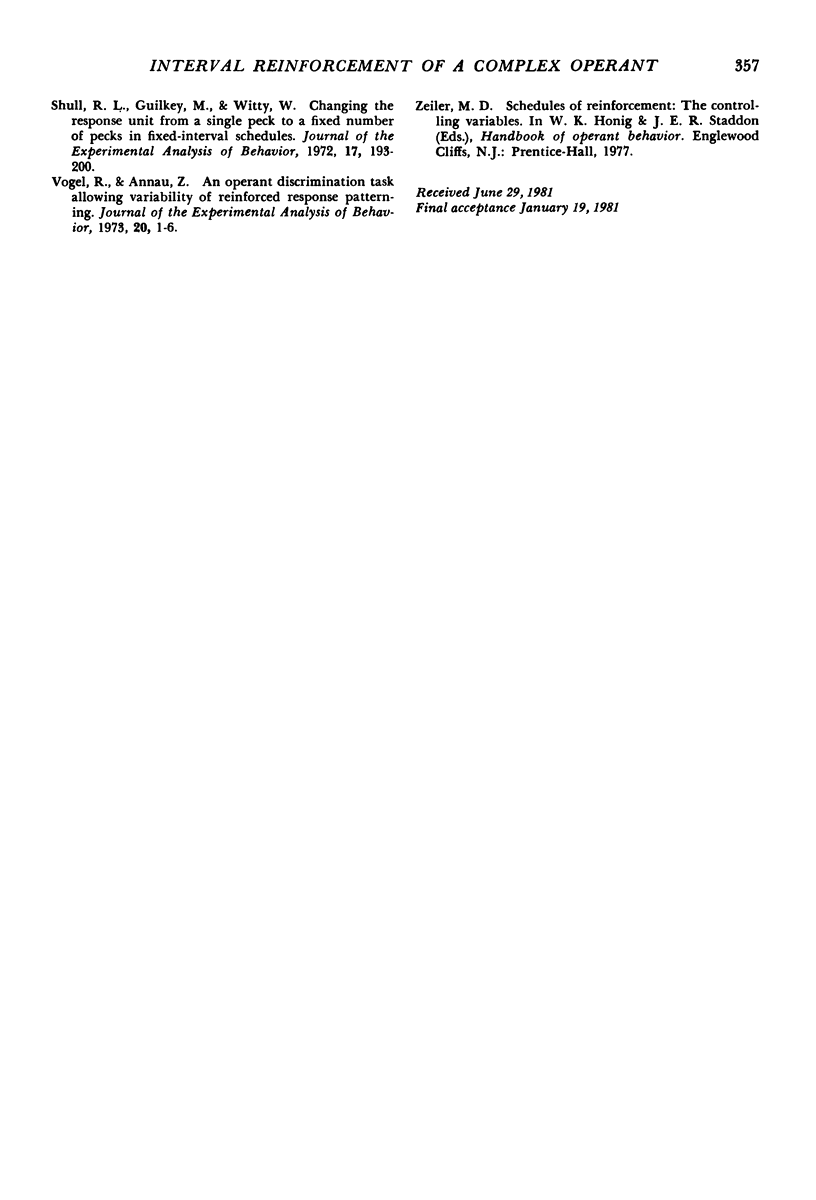
Selected References
These references are in PubMed. This may not be the complete list of references from this article.
- ANGER D. The dependence of interresponse times upon the relative reinforcement of different interresponse times. J Exp Psychol. 1956 Sep;52(3):145–161. doi: 10.1037/h0041255. [DOI] [PubMed] [Google Scholar]
- Boren M. C., Gollub L. R. Accuracy of performance on a matching-to-sample procedure under interval schedules. J Exp Anal Behav. 1972 Jul;18(1):65–77. doi: 10.1901/jeab.1972.18-65. [DOI] [PMC free article] [PubMed] [Google Scholar]
- Brown P. L., Jenkins H. M. Auto-shaping of the pigeon's key-peck. J Exp Anal Behav. 1968 Jan;11(1):1–8. doi: 10.1901/jeab.1968.11-1. [DOI] [PMC free article] [PubMed] [Google Scholar]
- FINDLEY J. D. An experimental outline for building and exploring multi-operant behavior repertoires. J Exp Anal Behav. 1962 Jan;5(Suppl):113–166. doi: 10.1901/jeab.1962.5-s113. [DOI] [PMC free article] [PubMed] [Google Scholar]
- Kelleher R. T. Conditioned reinforcement in second-order schedules. J Exp Anal Behav. 1966 Sep;9(5):475–485. doi: 10.1901/jeab.1966.9-475. [DOI] [PMC free article] [PubMed] [Google Scholar]
- Lee J. K., Gollub L. R. Second-order schedules with fixed-ratio components: variation of component size. J Exp Anal Behav. 1971 May;15(3):303–310. doi: 10.1901/jeab.1971.15-303. [DOI] [PMC free article] [PubMed] [Google Scholar]
- NEVIN J. A., CUMMING W. W., BERRYMAN T. Ratio reinforcement of matching behavior. J Exp Anal Behav. 1963 Apr;6:149–154. doi: 10.1901/jeab.1963.6-149. [DOI] [PMC free article] [PubMed] [Google Scholar]
- Schwartz B. Development of complex, stereotyped behavior in pigeons. J Exp Anal Behav. 1980 Mar;33(2):153–166. doi: 10.1901/jeab.1980.33-153. [DOI] [PMC free article] [PubMed] [Google Scholar]
- Schwartz B. Failure to produce response variability with reinforcement. J Exp Anal Behav. 1982 Mar;37(2):171–181. doi: 10.1901/jeab.1982.37-171. [DOI] [PMC free article] [PubMed] [Google Scholar]
- Shull R. L., Guilkey M., Witty W. Changing the response unit from a single peck to a fixed number of pecks in fixed-interval schedules. J Exp Anal Behav. 1972 Mar;17(2):193–200. doi: 10.1901/jeab.1972.17-193. [DOI] [PMC free article] [PubMed] [Google Scholar]
- Vogel R., Annau Z. An operant discrimination task allowing variability of reinforced response patterning. J Exp Anal Behav. 1973 Jul;20(1):1–6. doi: 10.1901/jeab.1973.20-1. [DOI] [PMC free article] [PubMed] [Google Scholar]


